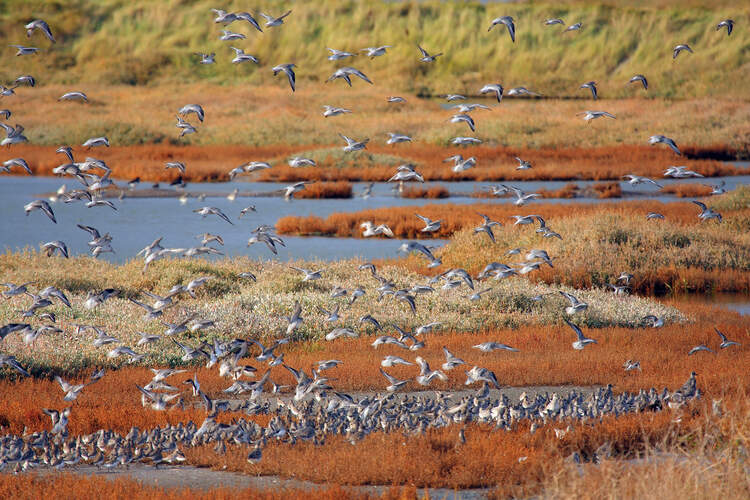
A new study highlights the importance of the UK’s saltmarshes in mitigating the impacts of climate change
By
Easy to overlook and often hard to access, saltmarshes, which are a type of coastal wetland swept twice daily by rising and falling tides, form along the edge of estuaries in semi-sheltered areas where fresh and salt waters mingle. Despite being one of the least understood eco-systems in the UK, they provide us with a natural form of coastal protection against erosion and flooding, and they’re a vital nursery for many fish species as well as being important winter breeding and feeding sites for many waders and waterbirds.
In the UK, saltmarshes cover more than 450 sq km of the coastline. However, according to a new study led by the University of St Andrews and the University of York, the UK’s saltmarshes are under threat from climate change, coastal erosion, and sea-level rise. This is bad news not just for the fish that use them as nurseries and the birds that are reliant on them, but it’s also bad news in the battle against climate change.
Year by year, saltmarshes accumulate thin layers of sediments that are rich in carbon from the plants that grow and die there, as well as from adjacent sources on land (via rivers) and at sea. As this organic carbon is buried in the waterlogged soils, decomposition is slowed, keeping carbon out of the atmosphere. Essentially, they provide a natural climate regulation service through the long-term storage of organic carbon in their soils.
Researchers involved in the study, which was published this week in the journal Science Direct, looked at the density of organic carbon in 21 saltmarshes around the UK, using specialist dating techniques to work out when and how quickly the sediments accumulated. They found that UK saltmarshes store 5.2 million tonnes of carbon. However, they also discovered that rates of new carbon accumulation are much slower than previously thought. This is important as Professor Roland Gehrels, Head of the Environment & Geography Department at the University of York, and a researcher on the project, explained: ‘With the speed of climate change accelerating at an alarming rate, this deeper understanding of saltmarshes and their untapped potential for carbon sequestration has never been more urgent. The low accumulation rates demonstrated in this study really highlight that if lost, these carbon stores will take centuries to build up again.’
According to the project’s principal scientist, Professor William Austin of the School of Geography and Sustainable Development at the University of St Andrews, this means that protecting the salt marshes that we have in the UK is very important – perhaps more so than trying to restore or create new saltmarshes. ‘While restoring and creating new saltmarshes offers a potential boost for climate, people and biodiversity and may be valuable to counteract habitat loss, there has never been a more important time to protect the vulnerable organic carbon already stored in existing saltmarshes. This must be a priority for the UK and elsewhere because the protection of existing habitats (and carbon stores) offers climate benefits from avoided greenhouse gas emissions which are several times more significant than those gained from new accumulation of organic carbon in these ecosystems.’
Related articles:




